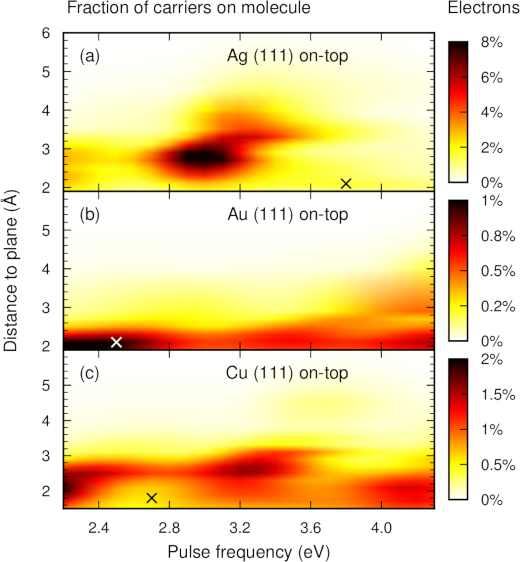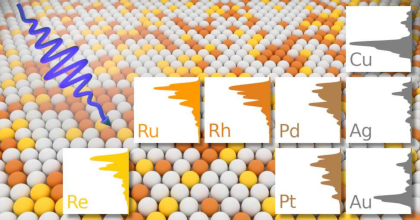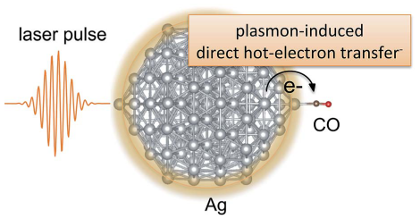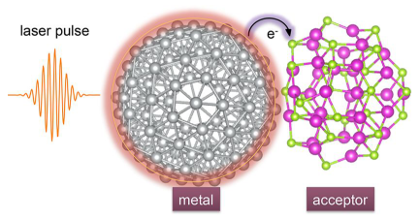Hot-carrier transfer across a nanoparticle-molecule junction: The importance of orbital hybridization and level alignment
J. Fojt,
T. P. Rossi,
M. Kuisma,
and
P. Erhart
Nano Letters 22, 8786
(2022)
arXiv:2206.05027
doi: 10.1021/acs.nanolett.2c02327
Download PDF

While direct hot-carrier transfer can increase photo-catalytic activity, it is difficult to discern experimentally and competes with several other mechanisms. To shed light on these aspects, here, we model from first principles hot-carrier generation across the interface between plasmonic nanoparticles and a CO molecule. The hot-electron transfer probability depends non-monotonically on the nanoparticle-molecule distance and can be effective at long distances, well outside the region of chemisorption; hot-hole transfer on the other hand is limited to shorter distances. These observations can be explained by the energetic alignment between molecular and nanoparticle states as well as the excitation frequency. The hybridization of the molecular orbitals is the key predictor for hot-carrier transfer in these systems, emphasizing the need to include the effects of ground state hybridization for accurate predictions. Finally, we show a non-trivial dependence of the hot-carrier distribution on the excitation energy, which could be exploited when optimizing photo-catalytic systems.



